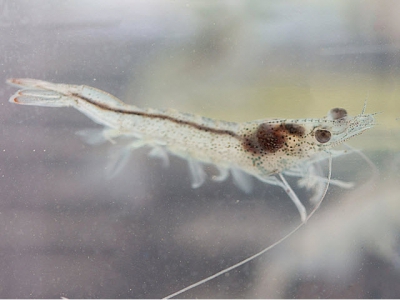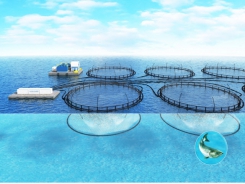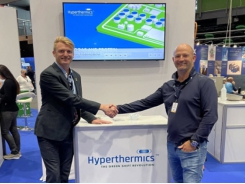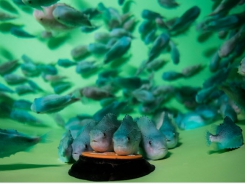Could listening to shrimp improve RAS production?

A fully-funded PhD that is looking to use acoustic technology to understand shrimp behaviour in recirculation aquaculture systems (RAS) is currently being offered by the University of St Andrews.
The project will use cutting-edge technologies to assess shrimp behaviour in RAS
Shrimp and prawns are seen as promising candidates to be cultured in RAS, but the technology is new and requires better understanding and refinement to reach its full potential.
Understanding the behaviour of cultured animals is key to optimising production, assisting with best husbandry practise and maximising welfare. The PhD will involve applying new video and acoustic technological approaches to improve understanding of whiteleg shrimp (Litopenaeus vannamei).
Crustaceans have not traditionally been thought of as ‘vocal’ animals, but there is a growing awareness of the importance of sound to crustaceans and it may be possible to move towards on-demand feeding if there are auditory cues to hunger.
The project will involve using stereo videography to observe 3D swimming activity of prawns in tanks, and document aspects of group behaviour including nearest neighbour analysis, for example as has been done for Antarctic krill (Murphy et al. 2019). This will inform optimisation of stocking densities.
Crustaceans have not traditionally been thought of as ‘vocal’ animals, but there is a growing awareness of the importance of sound to them (Coquereau et al. 2016) and it may be possible to move towards on-demand feeding if there are auditory cues to hunger.
Sequencing of the gut microbiota under different culture conditions will provide an opportunity to interrogate linkages to the observed animal behaviours (Soares et al. 2019). This raises the prospect of beneficially influencing the shrimp phenotype through manipulating the microbiota, such as by probiotic supplementation or feed composition. The video and acoustic sampling and microbiota description will deliver very large volumes of data. We will explore application of cutting-edge computer vision and AI techniques to extract patterns from data and maximise the inferences that can be made from the behavioural observations.
All data together should lead to development of improved methods for RAS cultivation, that in turn will deliver higher yields from more efficient, high-welfare aquaculture for a green and prosperous bioeconomy.
Related news
Tools

Phối trộn thức ăn chăn nuôi

Pha dung dịch thủy canh

Định mức cho tôm ăn

Phối trộn phân bón NPK

Xác định tỷ lệ tôm sống

Chuyển đổi đơn vị phân bón

Xác định công suất sục khí

Chuyển đổi đơn vị tôm

Tính diện tích nhà kính

Tính thể tích ao




 How can the aquafeed industry make the most…
How can the aquafeed industry make the most…  Researchers use personality profiling to improve lumpfish performance
Researchers use personality profiling to improve lumpfish performance